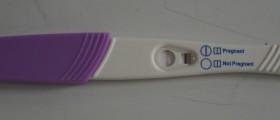
If both partners are under the age of 35 and otherwise healthy, medical advice is usually to try to get pregnant for a year before seeking treatment. After the age of 35, doctors usually advise patients to come in for treatment after six months. And at any age, medical treatment is needed for couples when either party has a history of Chlamydia, the male partner has a low sperm count, or the female partner has had pelvic inflammatory disease or painful menstruation.
Why should it be difficult to conceive a second child? Sometimes there is a change in the health of the male partner. Men's fertility is diminished by exposure to solvents, industrial chemicals, pesticides, and herbicides, often enough to cause low sperm counts. If there has been no change in the health of the man, the most common cause of secondary infertility in women is uterine fibroids, also known as leiomyomas. These are tough growths in the uterus that are fueled by the release of the hormone estrogen.
The reason they often appear after pregnancy is that pregnancy releases enormous amounts of estrogen. After the baby is born, these growths can block the fallopian tubes so the egg cannot emerge from the ovaries, or they may block the cervix so sperm cannot enter the womb. Fibroids can grow so large that a woman looks pregnant, making feeling guilty about infertility even more painful. There may be palpable lumps in the abdomen. Most of the time, however, there are no symptoms at all. Fibroids can only be identified by a pelvic exam and/or ultrasound. When the primary issue in secondary infertility is uterine fibroids, care has to be taken to avoid scarring. Pelvic adhesions caused by scar tissue left by the surgery to remove the fibroids can also cause secondary infertility. In most cases, however, women are able to conceive and carry a child to term about 3 months after treatment for the fibroids.
















Your thoughts on this
Loading...